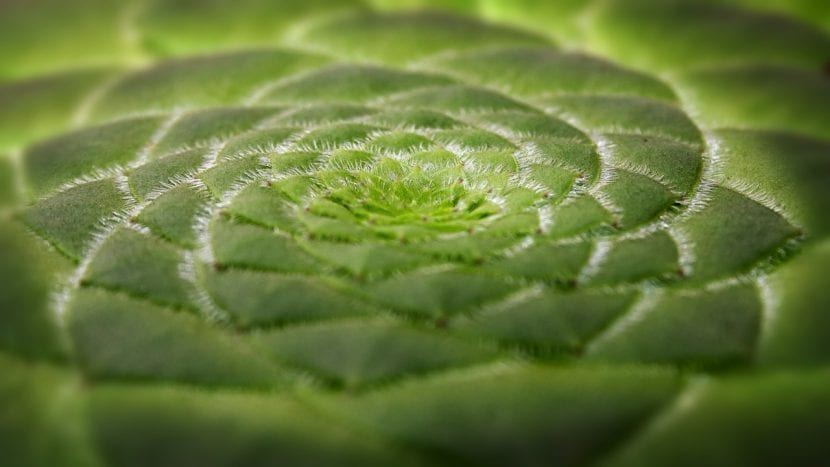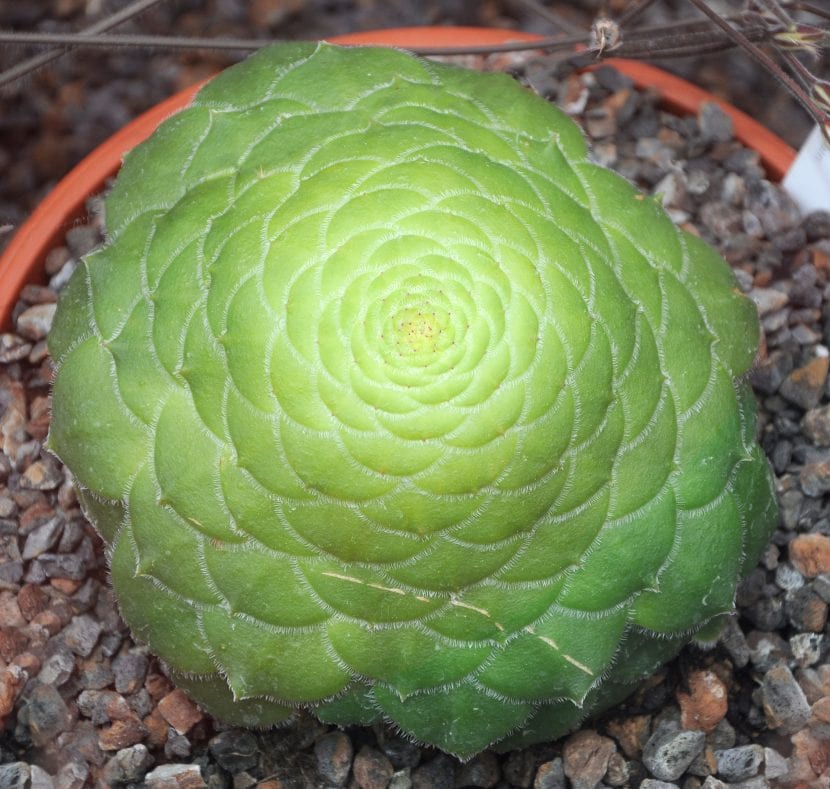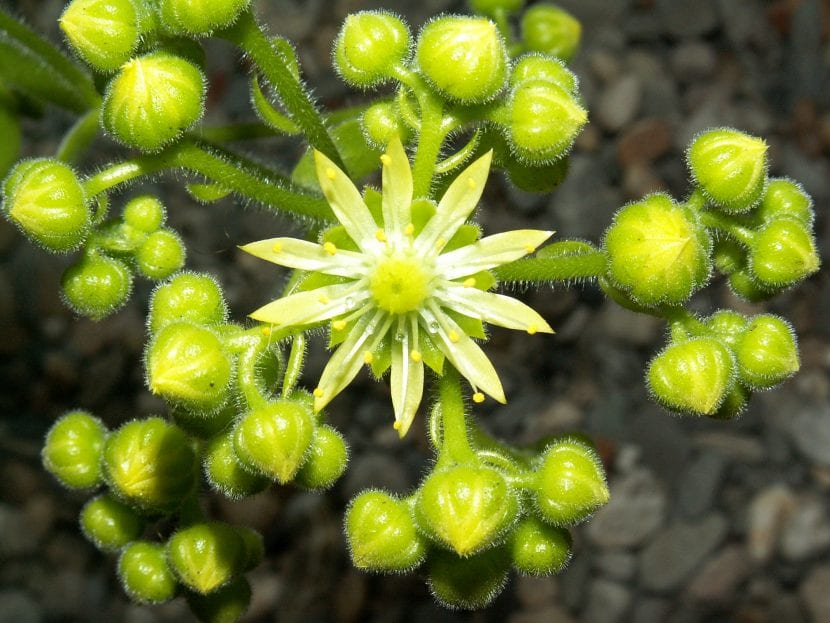
El Aeonium Tabulare it is one of the most striking plants that exist. Originally from the Canary Islands, it is so beautiful that today it is almost certain that in almost all succulent collections there is at least one specimen.
And the best of all is that It can be grown in a pot, yes, wide and low; You'll see right away why I'm telling you this 😉. Discover what are the characteristics and care of this species of Aeonium.
Characteristics of the Aeonium tabuliforme

Our protagonist is a plant native to Tenerife (Canary Islands) that forms a flattened rosette like a plate about 30 inches in diameter, composed of about 100-200 leaves which are densely imbricated and glabrous, with the margins populated by white and soft cilia (hairs). It has a stem, but this is very short and barely visible, as it is densely clothed with the bases of the older leaves.
When he reaches adulthood, in summer the flowers sprout that are grouped in an inflorescence that measures more than 30 centimeters in height and it is yellowish-green in color. Once they are pollinated and have given seeds, the specimen dies.
How do you take care of yourself?

Would you like to have a copy? If so, we recommend that you provide the following care:
- Location: outside, in semi-shade (with lots of light) or in full sun.
- Irrigation: once a week in summer, and every ten days the rest of the year.
- Substratum: it must have very good drainage. You can mix pumice with 30% black peat, for example, so that the plant can grow well.
- Subscriber: from spring to early autumn with liquid fertilizers for cacti and other succulents, following the instructions specified on the package.
- Transplant: in spring, every two years.
- Rusticity: it is sensitive to cold. You need protection if the temperature drops below -1ºC.

Did you know the Aeonium Tabulare?
Monica jardinería on I've already seen the Ponsequia thing and really. What a pity that you are far away because I will help you for free. All my life I have loved taking care of all pink plants. captus datas .euphorias ortensias orchids .all so I don't let my family give me forestry voted I had a small farm in Vila Franca del Pende with fruit trees 40 rose bushes and I took care of everything .my husband I but .I was 200 years, sorry if I bother you, thank you for what I learned until another day
Thank you for your comment, Rosa 🙂
Surely that farm must look beautiful.
Hello, could you tell me how to transplant it, so that it doesn't suffer?… It never flowered, and I've had it for about 2 years
In Argentina we are entering the summer
thanks, sweethearts
Hello, Martha.
The first thing you have to see is if the roots come out of the holes in the pot, because if this is not the case, it is best to wait a little longer to transplant it.
But if it does, then you simply have to remove it from said pot, tapping it a few times so that the soil bread "unsticks" from the container and can come out better. And then, plant it in a larger pot, measuring about 4 centimeters wide and taller than the previous one; Or plant it in the ground.
The aeonium is a very resistant plant. Don't worry if some of the rootlets break. Of course, it is preferable that none break, but if it does, nothing would happen.
A greeting.